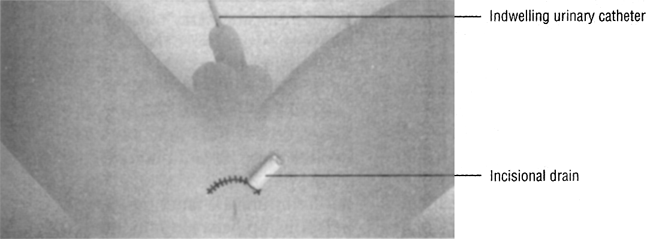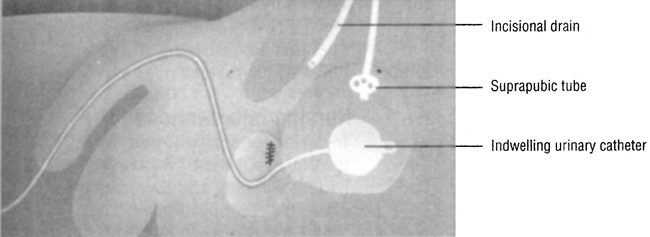Prostatectomy
Radical prostatectomy is a treatment option for early stages of prostate cancer. Total or partial prostatectomy is also an option for males with significantly obstructive benign prostatic hyperplasia, and it’s performed to remove diseased or obstructive tissue and restore urine flow through the urethra. Depending on the disease, one of four approaches is used. Transurethral resection of the prostate (TURP), the most common approach, involves insertion of a resectoscope into the urethra. Open surgical approaches include suprapubic, retropubic, and perineal prostatectomy. (See Comparing types of prostatectomy, pages 744 and 745, for indications, advantages, and disadvantages of each approach.)
Procedure
In TURP, the patient is placed in a lithotomy position and anesthetized. The surgeon then introduces a resectoscope into the urethra and advances it to the prostate. After instilling a clear irrigating solution and visualizing the obstruction, he uses the resectoscope’s cutting loop to resect prostatic tissue and restore the urethral opening.
In suprapubic prostatectomy, the patient is given a general anesthetic and placed in a supine position. The surgeon begins by making a horizontal incision just above the pubic symphysis. After instilling fluid into the bladder to distend it, he makes a small incision in the bladder wall to expose the prostate. He then shells the obstructing prostatic tissue out of its bed with his finger. After clearing the obstruction and ligating all bleeding points,
he usually inserts a suprapubic drainage tube and a Penrose drain.
he usually inserts a suprapubic drainage tube and a Penrose drain.
Comparing types of prostatectomy
| ||||||||||||||||||||





